Day Trading For Beginners
ZigZag
Day Trading For Beginners: ZigZag is a tool rather than an indicator. It does not predict price movement or give signals to buy or sell. All it does is reduce market “noise” but its simplicity is its strength.
One of the difficulties for traders is to stay with a trending market because reactions against the trend tend to force them out of their positions. The ZigZag tool filters out price movements less than the set percentage and is plotted as a straight line over the chart. The default setting is usually 5% which means that the ZigZag line will not change direction until the market moves against the trend by a minimum of 5%. This enables traders/investors to ignore minor movements against the trend and stay with their positions for longer.
The ZigZag is usually calculated based on the closing prices of the time frame being used but can also be based on the high-low range. Of course, the sensitivity of the ZigZag will depend on the percentage setting. A smaller percentage will result in a more sensitive line with more changes in direction. It is important, therefore, to experiment on past trends of a financial security to asses an “appropriate” percentage setting. An appropriate setting is one that keeps the trader in the market for a large part of the trend but also highlights a possible change in the main trend.
The tool can be used to identify the bigger picture in the market and traders often use it as an aid with other technical indicators or market analysis. For example, it can be helpful in trading Measured Moves, identifying Elliott Waves or measuring Fibonacci Retracements. A trader could also use an oscillator like the RSI, Stochastic or Williams %R to highlight overbought or oversold conditions when the market is in a reaction phase against the trend. For example, if the trend is up and the ZigZag turns down, one trading strategy may be to wait for an oscillator to signal an oversold condition before going long in anticipation of an upturn of the ZigZag and a return to the main trend.
The ZigZag can be used in any time frame but the percentage must be set accordingly. A shorter time frame will require a shorter percentage setting. Examine the 15 minute intra-day bar chart of the EUR/USD below. The setting is at 0.25%. Intra-day traders usually get out of their positions by the end of the day. Here is an example of the ZigZag keeping a trader with the trend over a period of days, although the time frame is an intra-day time frame. One way of trading this move is to go long with the trend and move stop losses under the lows that the ZigZag forms. As long as the ZigZag line is making higher lows the position will be maintained. When a low is broken then the trade is closed.
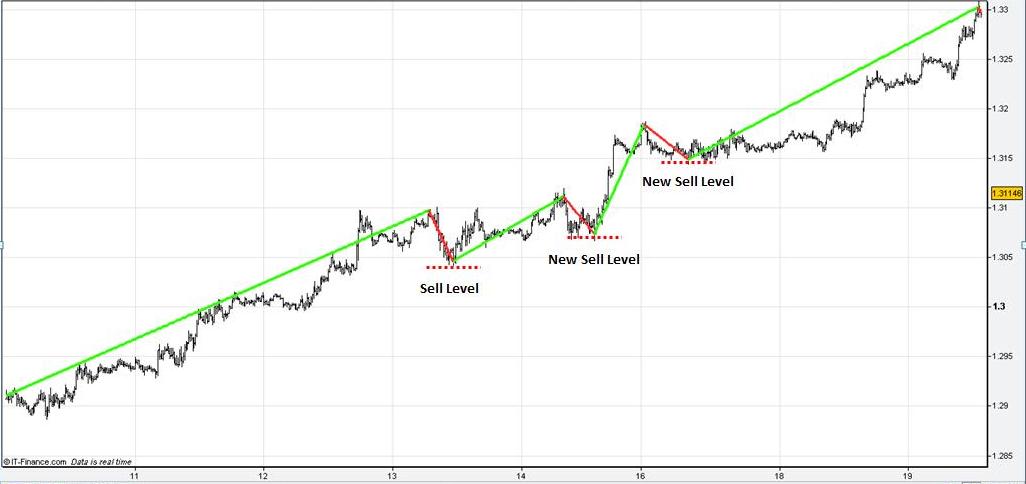
View charts in interactive mode at ProRealTime.com.
The 15 minute bar chart of Facebook below has a setting of 0.75%. Using the previous strategy, a trader going short with the down trend would be kept in the market until the 2570 level which is the first time a ZigZag top is crossed.
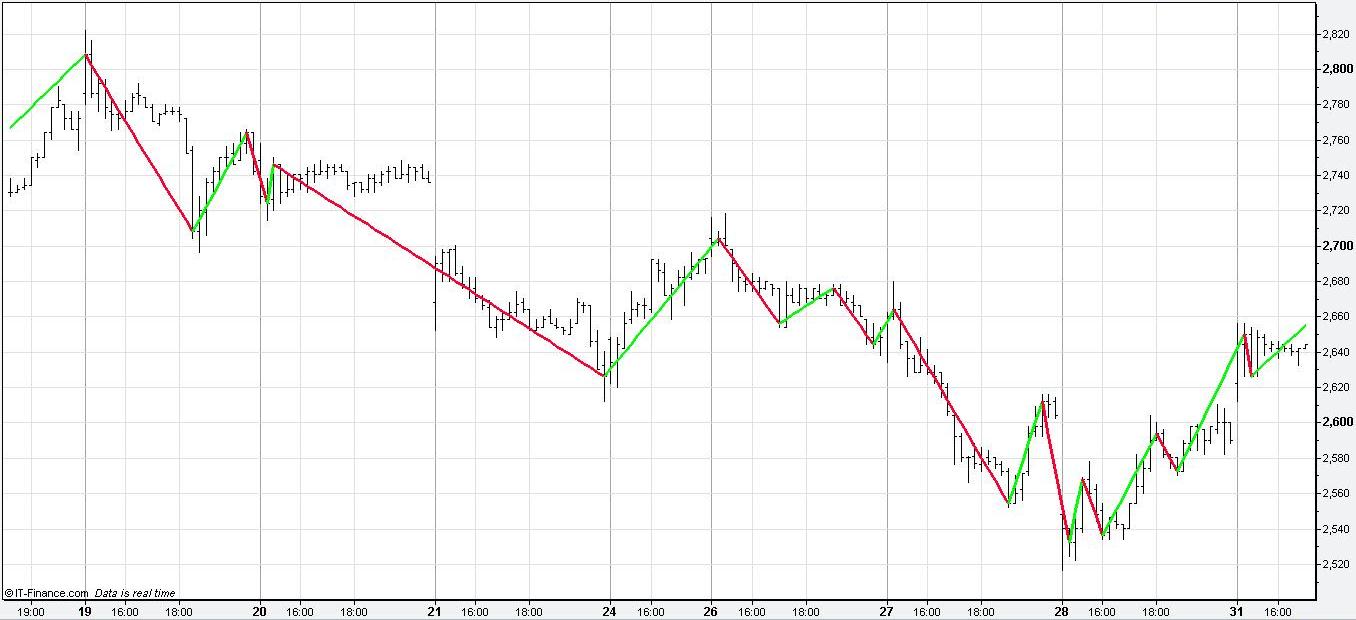
The following daily bar chart of Gold demonstrates how the ZigZag is better suited to a trend. After the 15th May the market goes into a period of congestion and the ZigZag tracks this sideways movement.
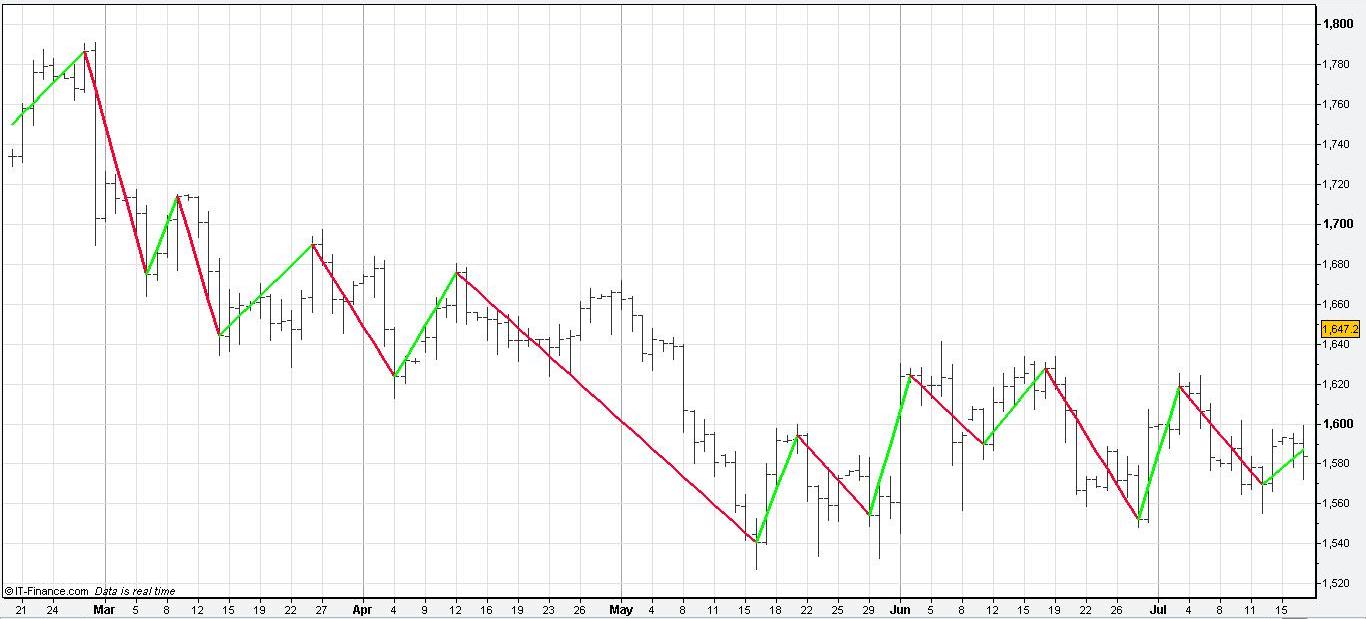
Day Trading For Beginners: ZigZag
The following two daily charts of the S&P500 demonstrate how changing the percentage setting produces fewer reactions in the ZigZag line. The first chart has a percentage setting of 2.5%. The second chart has a setting of 5%. In choosing a setting the trader needs to balance how much risk they wish to take with what setting is most likely to keep them in the market with the trend. Back testing different percentage settings over historical data can help the trader gain a better understanding of how individual financial securities behave when trending.
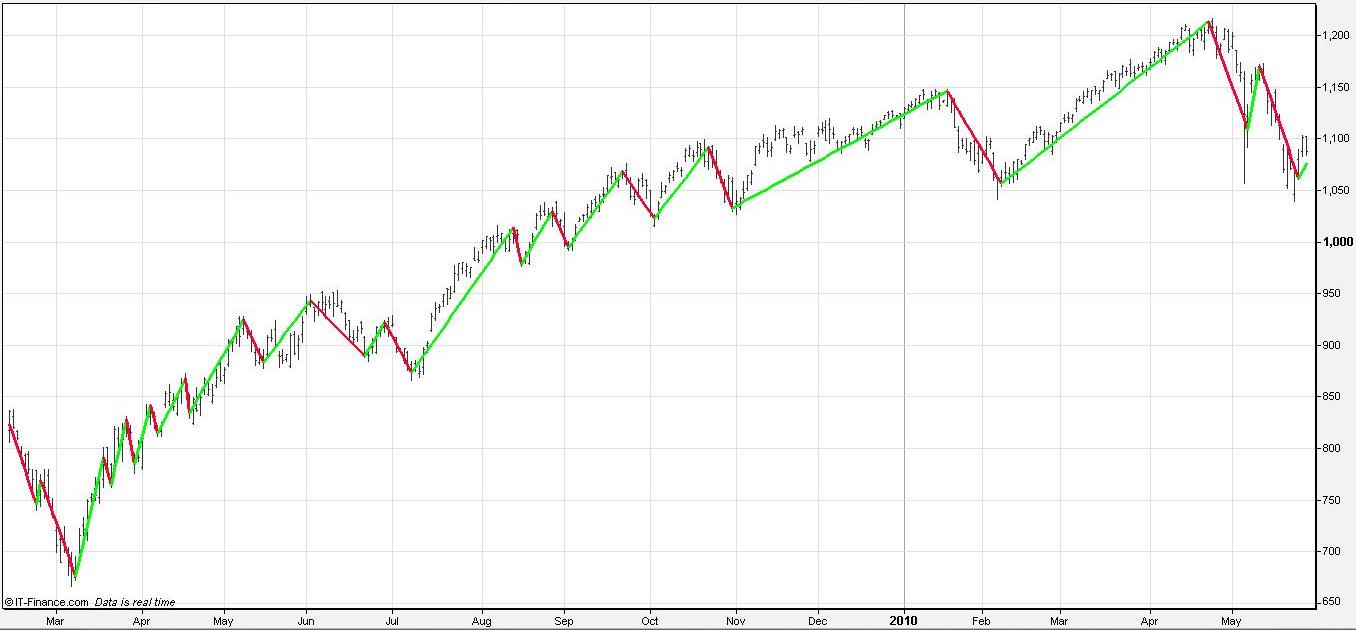
Day Trading For Beginners: ZigZag.
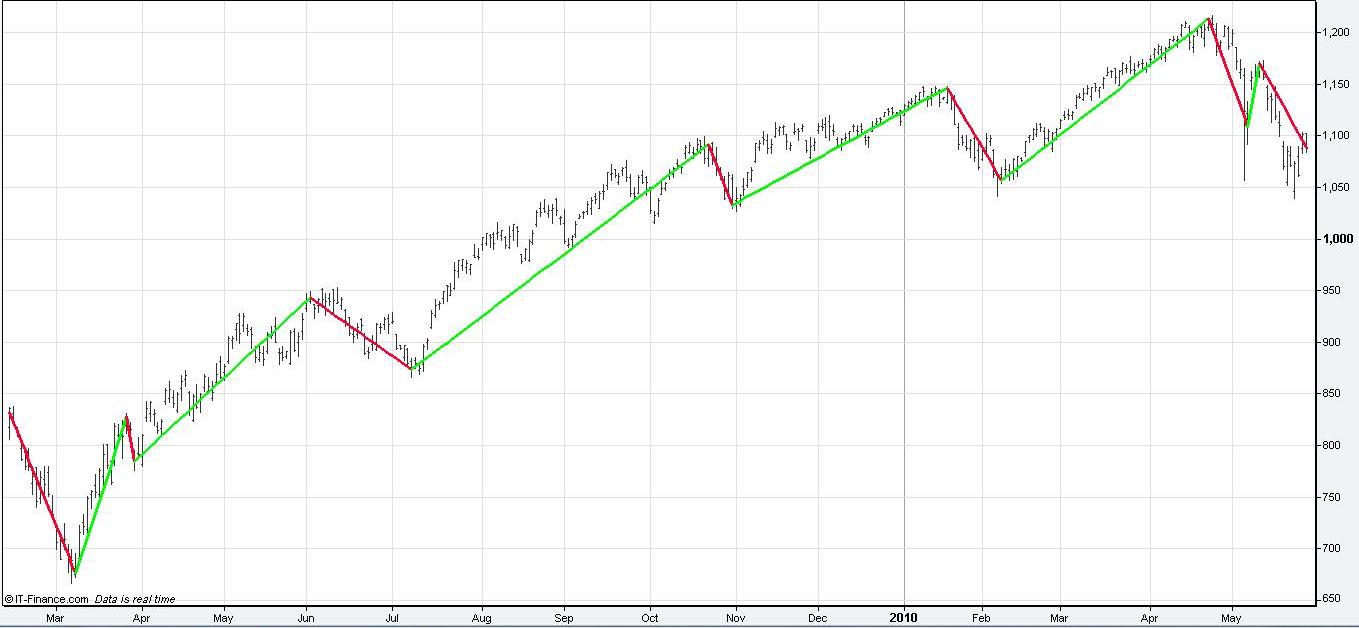
Day Trading For Beginners: ZigZag
Trendlines can be used in trading Stocks, Exchange Traded Funds, Forex, Commodities, Bonds, Futures, etc. Traders should always implement appropriate risk management and stop loss strategies.
Return to Top of Day Trading For Beginners: ZigZag